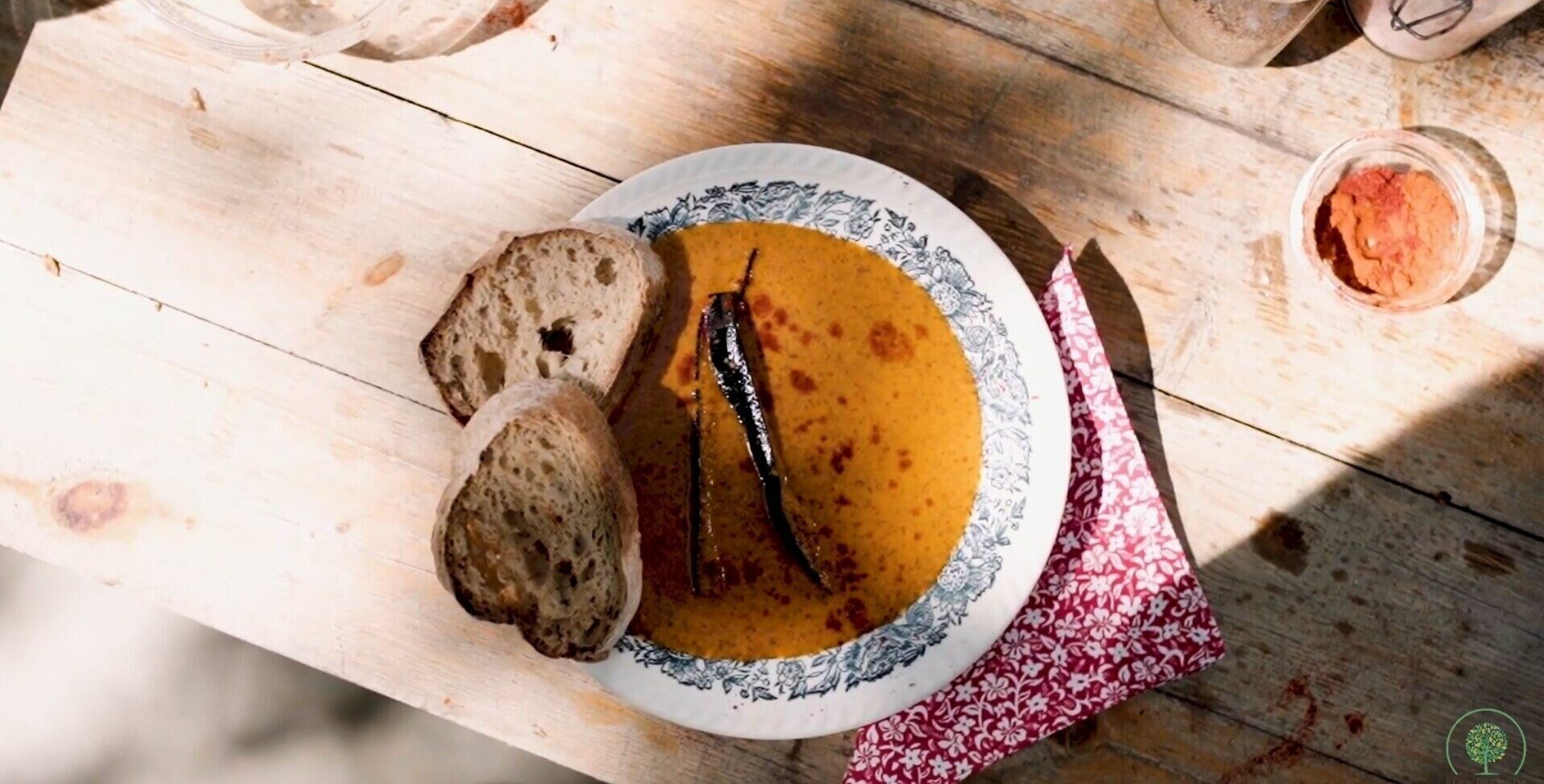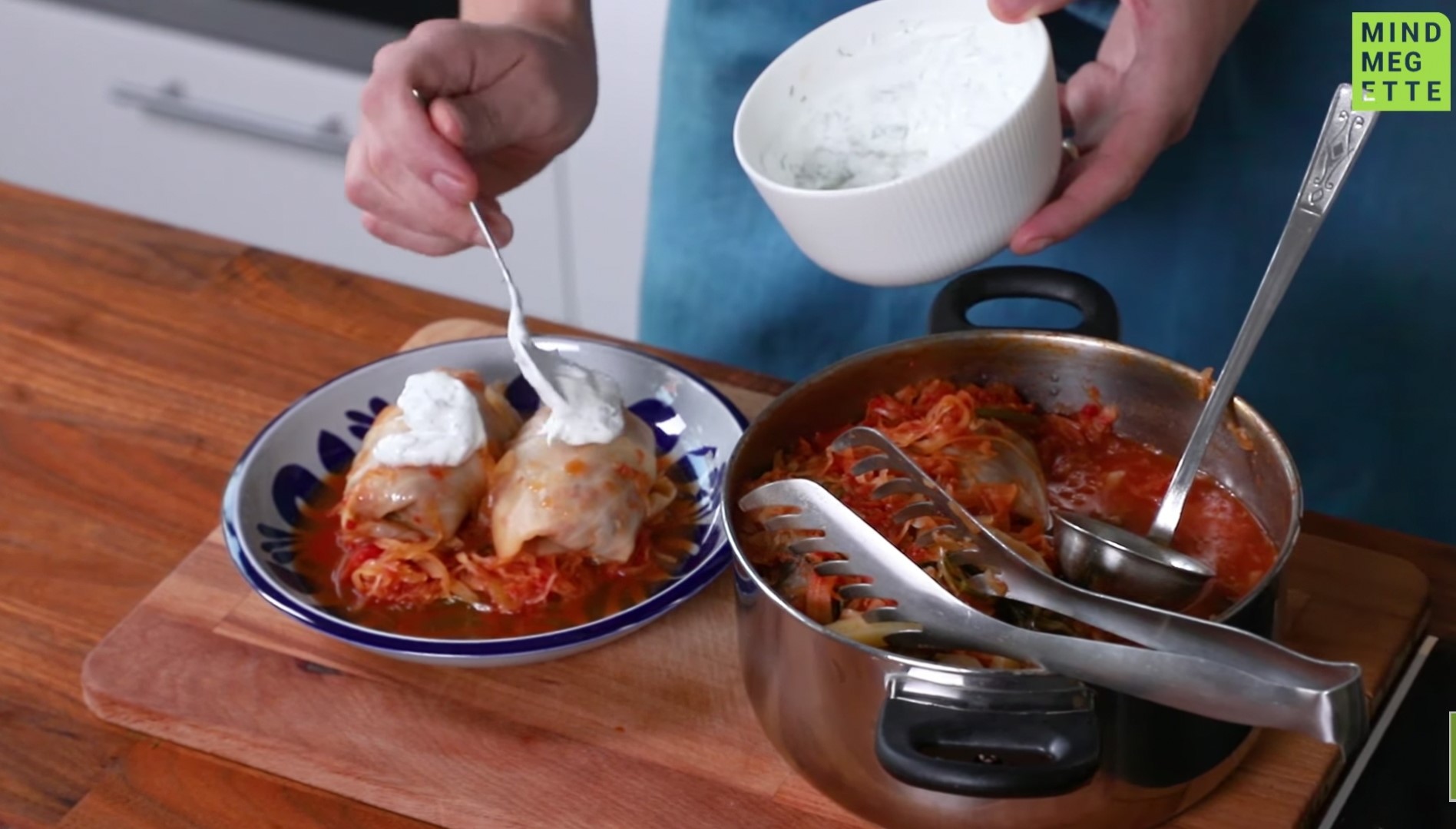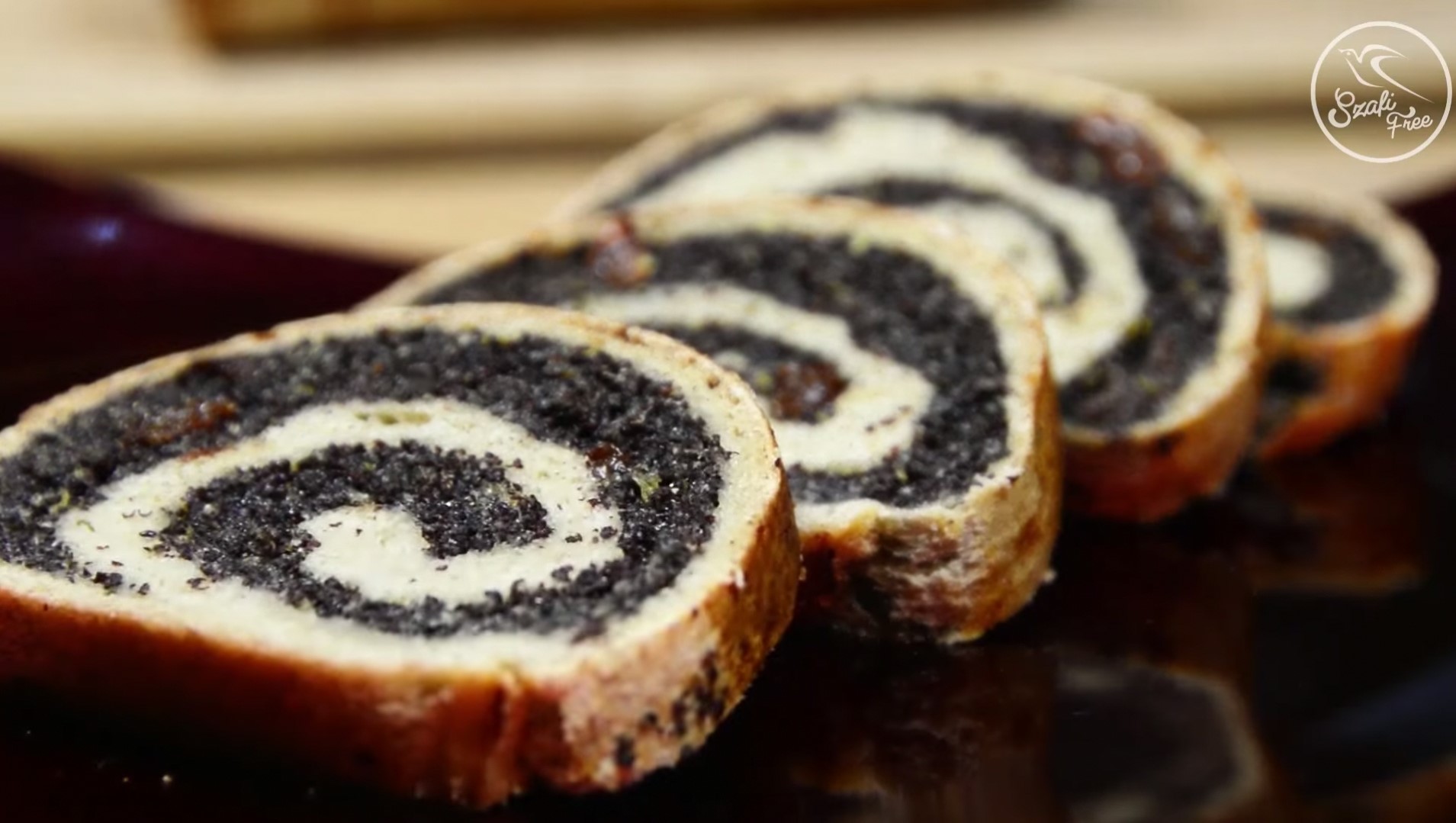3 vegan recipes for the perfect meat-free Hungarian Christmas dinner

Christmas is just around the corner, and the celebration cannot be complete without a traditional Christmas dinner shared with the family.
If you want to try some traditional Hungarian dishes during the Holidays, check out OUR ARTICLE featuring a classic three-course Christmas dinner menu. Although meat is fundamental to Hungarian cuisine, eating plant-based does not mean that you have to miss out on these delicious seasonal dishes. In this article, we want to show you some examples of the great selection of traditional yet vegetarian- and vegan-friendly Christmas recipes.
Vegan “fish soup”

Ingredients
2 medium onions
1 head of garlic
smoked paprika
sweet paprika
ground caraway
salt-free food seasoning (e.g. with carrot, parsnip, onions, celery, parsley leaves)
2 eggplants
nutritional yeast flakes
cooked teff (a tiny grass seed with a mild, nutty flavour)
1 Nori sheet (dried edible seaweed)
coconut oil
- Tear the Nori sheet into a few pieces, then soak it for approximately 5 minutes to retain a little crunch, or 10 minutes if you want it to be more tender.
- Cut the eggplants in half and scoop out the seeds. Peel one eggplant and dice it, then cut the other eggplant into strips. Sprinkle some salt on the eggplant strips, let them sit until beads of moisture start to form on the surface. Fry them in some coconut oil.
- Dice the onions and the garlic. Pour some coconut oil into a saucepan, add some salt, smoked paprika, sweet paprika, ground caraway, and salt-free food seasoning. Sauté the onions until translucent.
- Add the diced eggplants, some nutritional yeast flakes, and continue to sauté for a few minutes.
- Pour the water and the Nori sheet pieces into the saucepan and cook until the eggplants become tender. Use a hand blender to purée the mixture, then add the cooked teff and the fried eggplant strips.
Read also: What is szaloncukor and why do Hungarians spend so much on it?
Hungarian Christmas cookie recipes
Stuffed cabbage with tofu and mushrooms

Hungarian stuffed cabbage is traditionally made with minced meat, but there are numerous plant-based stuffing alternatives, such as mushroom, eggplant, zucchini, seitan or tofu. You can also use a mixture of the above ingredients to add more flavour and texture to your dish.
Ingredients
1 medium head sauerkraut
500 g chopped sauerkraut
500 g firm smoked tofu
150 g mushrooms
80 g rice
2 eggs
2 cloves of garlic
1 medium onion
2 tbsp vegan sour cream
1 tbsp flour
oil
salt
ground pepper
smoked paprika
sweet paprika
a few bay leaves
- Drain the tofu and pat it dry with paper towels, crumble, and set aside. Dice the onion and the mushrooms, then mince the garlic.
- Heat oil in a non-stick skillet to medium heat, then add the mushrooms and sauté until golden brown. Add the onion and continue to sauté for a few minutes. Add the minced garlic, the tofu, some salt, smoked paprika, sweet paprika, and ground pepper.
- Wash the rice and add it to the onion-tofu-mushroom mixture. Let the stuffing cool a bit, then add the eggs.
- Wash the sauerkraut leaves and the chopped sauerkraut. Take a leaf, trim the vein, put some stuffing in the middle of the cabbage leaf, roll the cabbage leaf around the filling, then, using your thumb on either side of the roll, gently tuck the ends of the cabbage. Repeat this with each leaf.
- Place some chopped sauerkraut at the bottom of a large pot and add a few bay leaves. Place some stuffed cabbages on top, then add some chopped sauerkraut. Repeat this layering process, cover the stuffed cabbages with the last layer of chopped sauerkraut, and add enough water to cover. Cook for approximately 60 minutes.
- Mix the vegan sour cream with the flour, then add some of the water in which the stuffed cabbage was cooked to warm up the roux a bit. Pour the roux into the pot, then bring it to a boil. Serve with vegan sour cream.
Vegan bejgli

Plant-based or not, no Hungarian Christmas lunch and dinner can be complete without some poppy seed and walnut bejgli.
Ingredients
For the dough:
600 g fine flour
250 ml plant-based milk alternative of your choice (of course, no alternative will have the sweetness, protein, fibre, and fat as milk, but almond, oat, soy or cashew milk are probably the best options for baking)
150 g coconut butter
40–50 g yeast
100 g sugar
1 packet vanilla sugar
salt
For the fillings:
300 g chopped walnuts
300 g ground poppy seeds
150 g sugar
half a packet of vanilla sugar
1 tbsp lemon zest
1 tbsp orange zest
180 ml plant-based milk alternative
- Warm up the plant-based milk alternative, then dissolve the sugar and the yeast in the lukewarm milk.
- Sift the flour into a large bowl, add the sugar, the vanilla sugar, a pinch of salt, and mix the dry ingredients. Add the yeast and the coconut fat. Knead the dough thoroughly, then leave to rest for approximately one and a half hours in a warm place.
- Let’s prepare the fillings. Get two bowls, mix the chopped walnuts with the orange zest, half of the sugar, half of the vanilla sugar, and half of the plant-based milk. Then mix the ground poppy seeds with the lemon zest and the other half of the sugar, vanilla sugar, and the milk. You can also add raisins to the fillings.
- When the dough has risen, divide it into 2 pieces, and roll them into a rectangular shape. Spread the filling on the dough, fold in the edges on the shorter sides of the rectangle, and roll it up carefully. Leave them for another 15 minutes.
- Preheat the oven to 180°C, put the rolls on a baking sheet lined with parchment paper, brush the tops of the rolls with some milk, and bake for 30–35 minutes until golden brown.
Source: Daily News Hungary






I can’t stand seeing people in kitchens with their hair loose, all over their shoulders. To see them cooking like that makes me gag.
I always loved meat of every kind. However I also had leg cramps my entire life that i can remember. Last year I heard 2 medical doctors who are also nutritional scientists on the radio saying that when you no longer eat meat, within 2 months your body will start to heal things which you are not even necessarily aware of, particularly related to your heart. Being both elderly & overweight I decided to stop eating meat. I missed sausages at first since I used all kinds to flavour/spice every kind of soup I made. I had been taking glucosamine & calcium-magnesium for a few years for my leg cramps. 4 tabs a day. Helped a great deal but occasionally still got terrible cramps in my upper thigh. This summer I was building a lot & doing cement projects I’d been putting off & of course all of my gardens, my organic free-range egg selling business etc. Long hours of work 7 days a week. I was always too tired by dark, when I still had to make my supper. Didn’t remember to take supplements for a few months. Then getting ready for winter…I realized that I no longer have any leg cramps. Can it be the result of not eating meat for the past year?
Dear Kate, we are not medical experts but a meat-free diet can definitely have positive effects on the arteries. Meat is known for contributing to arterial plaque due to its high saturated fat content. That could be a reason why you don’t have cramps anymore. We wish you health and happiness for the New Year! 🙂